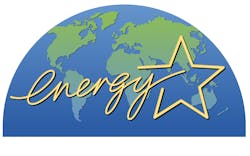Several weeks ago, our firm was contacted by Westat on behalf of the U.S. Dept. of Energy (DOE) Energy Information Administration (EIA). Westat is an employee-owned research firm that is well-known to Beltway insiders (i.e., they do a lot of federal government contracting). One of their core competencies is data collection and survey research, and they have been tasked by the DOE with conducting the 2018 Commercial Buildings Energy Consumption Survey (CBECS).
CBECS is the primary database for the ENERGY STAR Portfolio Manager, the online tool that compares the energy efficiency of various types of buildings. We were contacted because one or more of the buildings, for which we are the ENERGY STAR Property Data Administrator, have been selected as part of the survey sample. Of the more than 5.6 million commercial buildings in the U.S., approximately 16,000 were selected for the survey.
Of those, the EIA expects half of them to be eligible for CBECS and to respond to the survey, either through an online response or a face-to-face interview with one of the 180 or so Westat interviewers. Data collection began in April and is expected to continue through the end of the year, with preliminary results to be made public next spring. ENERGY STAR certifications are an important part of our firm’s practice, so we were excited to be part of this year’s CBECS.
Of course, ENERGY STAR isn’t just about certifying commercial buildings. In addition to the 270,000 commercial properties, comprising 26 billion square feet, in the ENERGY STAR Portfolio Manager, the program also certifies homes that are at least 10 percent more energy-efficient than homes built to code and that achieve a 20 percent average improvement. Last year, some 90 percent of the nation's largest homebuilders were building ENERGY STAR-certified new homes and apartments, adding to the two million single family ENERGY STAR certified single-family residences.
In our industry, we expect to see the familiar blue ENERGY STAR label on the residential and light commercial HVAC products that we work with every day. In addition to HVAC, ENERGY STAR, through independent laboratory testing, certifies appliances, building products, commercial food service equipment, data center equipment, electronics, lighting, office equipment, water heaters, and a variety of other products ranging from pool pumps to vending machines. Ninety percent of American household recognize the ENERGY STAR label, which is now on more than 60,000 product models, and in 2017, Americans purchased more than $100 billion of those products.
Established by the EPA and the DOE in 1992, ENERGY STAR and its partners had, by 2018, helped save Americans almost 4 trillion kWh of electricity, equivalent to more than 3 billion metric tons of CO2. Look for the ENERGY STAR label on the products you buy, the hotels and resorts in which you stay and play, and the restaurants at which you dine.
It’s good for our country AND for the planet!
A regular contributor to HPAC Engineering and a member of its editorial advisory board, the author is a principal at Sustainable Performance Solutions LLC, a south Florida-based engineering firm focusing on energy and sustainability. He can be reached at [email protected].
About the Author
Larry Clark
A member of HPAC Engineering’s Editorial Advisory Board, Lawrence (Larry) Clark, QCxP, GGP, LEED AP+, is principal of Sustainable Performance Solutions LLC, a South Florida-based engineering firm focused on energy and sustainability consulting. He has more than two dozen published articles on HVAC- and energy-related topics to his credit and frequently lectures on green-building best practices, central-energy-plant optimization, and demand-controlled ventilation.
